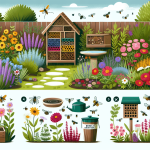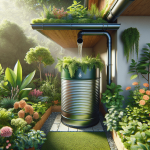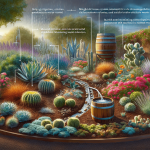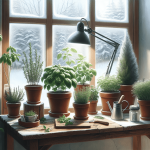This post may contain affiliate links. As an Amazon Associate, we may earn commissions from qualifying purchases.
Have you ever wondered how you can create a garden that promotes mindfulness and relaxation right in your own backyard? Imagine a space where the hustle and bustle of daily life fades away, replaced by the gentle sound of rustling leaves, the subtle fragrance of blooming flowers, and the soft touch of grass underfoot. Crafting such a sanctuary might seem challenging, but with thoughtful planning and a pinch of creativity, your very own retreat is within reach.
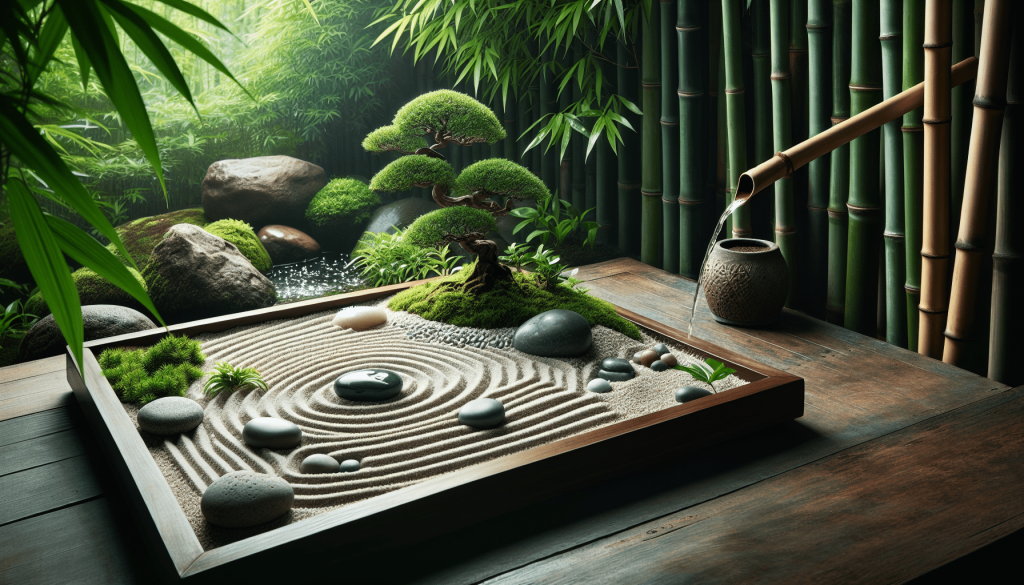
Understanding the Concept of a Mindful Garden
Achieving mindfulness in your garden involves creating an environment that calms the mind and invites a sense of tranquility. Unlike traditional gardens focused on aesthetics, a mindful garden is designed to engage your senses, encouraging you to pause and cherish each moment. It’s less about strict symmetry or impressing the neighbors with showy blooms, and more about finding peace and contentment.
The Importance of Location
Choosing the right location is crucial for a mindfulness-friendly garden. You want a spot that naturally instills a sense of serenity and privacy. Consider a corner of your yard that is shielded from street noise. If your space is limited, a balcony or even a windowsill garden can suffice. The goal is to create a refuge that is accessible and welcoming.
Embracing Nature Sounds
Sound plays a significant role in mindfulness. The serene babble of water, be it from a small fountain or a birdbath, can be incredibly soothing. Likewise, the chirping of birds or the rustle of leaves enhances the immersive experience. Planting rustling grasses or installing wind chimes can help amplify these sounds.
Designing Your Mindful Garden
Designing your garden involves arranging elements to form a cohesive and calming environment. Each component should flow naturally into the next, providing a seamless sensory journey.
Choosing the Right Plants
Plants are the heart of any garden and selecting the right variety is key for mindfulness. Opt for plants that engage multiple senses. Consider lavender for its calming scent or brightly colored flowers to stimulate your visual senses. Here’s a simple guide to choosing plants:
| Plant Type | Sensory Benefit | Suggested Varieties |
|---|---|---|
| Fragrant | Calming and soothing | Lavender, Jasmine, Rosemary |
| Colorful | Uplifts and energizes | Sunflowers, Marigolds, Primroses |
| Textural | Touch and tactile appeal | Lamb’s Ear, Fountain Grass, Moss |
Arranging for Flow
The layout of your garden should evoke a sense of flow, inviting exploration without feeling chaotic. Consider circular paths or spirals that allow you to stroll without a sense of haste. Use stones, wood chips, or gravel to create inviting walkways, which can also add a satisfying crunch underfoot.
Incorporating Water Elements
Water features can elevate your garden’s tranquility. A simple pond, cascading water feature, or bubbling fountain can introduce a relaxing auditory component. Not only do these features invite local wildlife, but the gentle sound of moving water fosters meditation and reflection.
Enhancing Relaxation in Your Garden
Once your garden design is set, the next step is to enrich it with elements that bolster relaxation. This involves considering not just what the garden looks like, but how it feels to inhabit.
Creating Comfortable Seating Areas
Ensure there’s a comfy spot where you can simply sit and exist, whether it’s a bench under a shady tree or a hammock swaying in the breeze. Natural materials, such as wooden benches or stone seating, can blend harmoniously with the garden environment.
Adding Personal Touches
Personal touches transform a space from a garden to your garden. Think about adding sculptures, favorite quotes engraved on stones, or wind chimes made of repurposed materials. Each item can serve as a reminder of pleasant memories or aspirations.
Lighting for Evening Enjoyment
Your garden can be just as enchanting at dusk as it is during the day. Soft lighting encourages extended enjoyment of the space. Consider installing solar lights, fairy lights, or lanterns to illuminate paths and features, creating a magical atmosphere for meditation under the stars.
Embracing Mindfulness Practices in the Garden
A well-designed garden provides a perfect backdrop for mindfulness practices. Incorporating routine practices ensures you leave worry at the gate and enter a state of relaxation.
Meditation and Breathing Exercises
Your garden is the perfect venue for meditation. Find a quiet spot, close your eyes, and focus on your breathing. Listen to nature’s symphony, which aids in grounding you in the present. You might also explore guided meditations designed for garden settings.
Tai Chi and Yoga
The gentle movements of tai chi and yoga can be revitalizing and grounding. Your garden provides a soft, natural platform for these practices. The open sky overhead and earthy scents help heighten an awareness of each movement.
Journaling and Creative Reflection
Journaling in your garden allows for self-reflection and creative expression. Sit in your chosen spot and let the peaceful ambiance inspire your writing. Or, indulge in sketching the flora, capturing the garden’s essence in your art.

Sustainability in a Mindful Garden
Mindful gardening goes beyond personal relaxation—it extends to caring for the environment. Sustainable practices ensure your haven contributes positively to the ecosystem.
Choosing Native Plants
Native plants often require less maintenance and attract beneficial insects and birds. By choosing local flora, your garden becomes an active participant in sustaining the local ecology. This not only keeps your garden healthy, but it enriches local biodiversity.
Implementing Eco-Friendly Practices
Avoid chemicals that harm the soil and surrounding areas. Create compost to nourish your garden naturally. Water efficiently by utilizing rainwater or installing a drip irrigation system. Making sustainable choices is an investment in future beauty and tranquility.
Encouraging Wildlife
A diverse garden invites wildlife, which can enhance the sensory experience. Birds, butterflies, and bees contribute their own particular beauty and sound. Birdhouses, feeders, and bee-friendly plants enrich this symbiotic relationship.
Overcoming Challenges
Creating a mindful garden can come with its own set of challenges. Embracing flexibility and finding joy in the process are key to overcoming obstacles.
Dealing with Space Limitations
If you’re working with limited space, think vertically with trellises or hanging gardens. Small doesn’t mean less impactful. Each element of a small garden can be intensely cultivated to engage your senses.
Managing Time Constraints
Establishing a mindful garden doesn’t have to be done in one weekend. Allocate small, consistent periods to tend to your garden. Gardening becomes a mindful practice in itself—an opportunity for you to unplug and reconnect with nature.
Addressing Budget Concerns
Mindful gardening needn’t be costly. Repurpose existing materials for paths and furniture. Swap plants with friends or grow from cuttings. The reward is not in the expense, but in the intimacy and peace the garden brings you.
Conclusion
Creating a garden that encourages mindfulness and relaxation is not about achieving perfection, but about fostering a space that speaks to your soul. By intentionally selecting plants, organizing your layout, and practicing sustainability, you have the power to craft an oasis of calm. Every time you step into your garden, it can be a journey to tranquility, inviting you to pause, breathe, and listen to the whispers of nature. Whether you’re embracing the simplicity of a single potted plant or curating an expansive floral tapestry, your mindful garden stands as a testament to the profound peace found in nature’s tender embrace.

